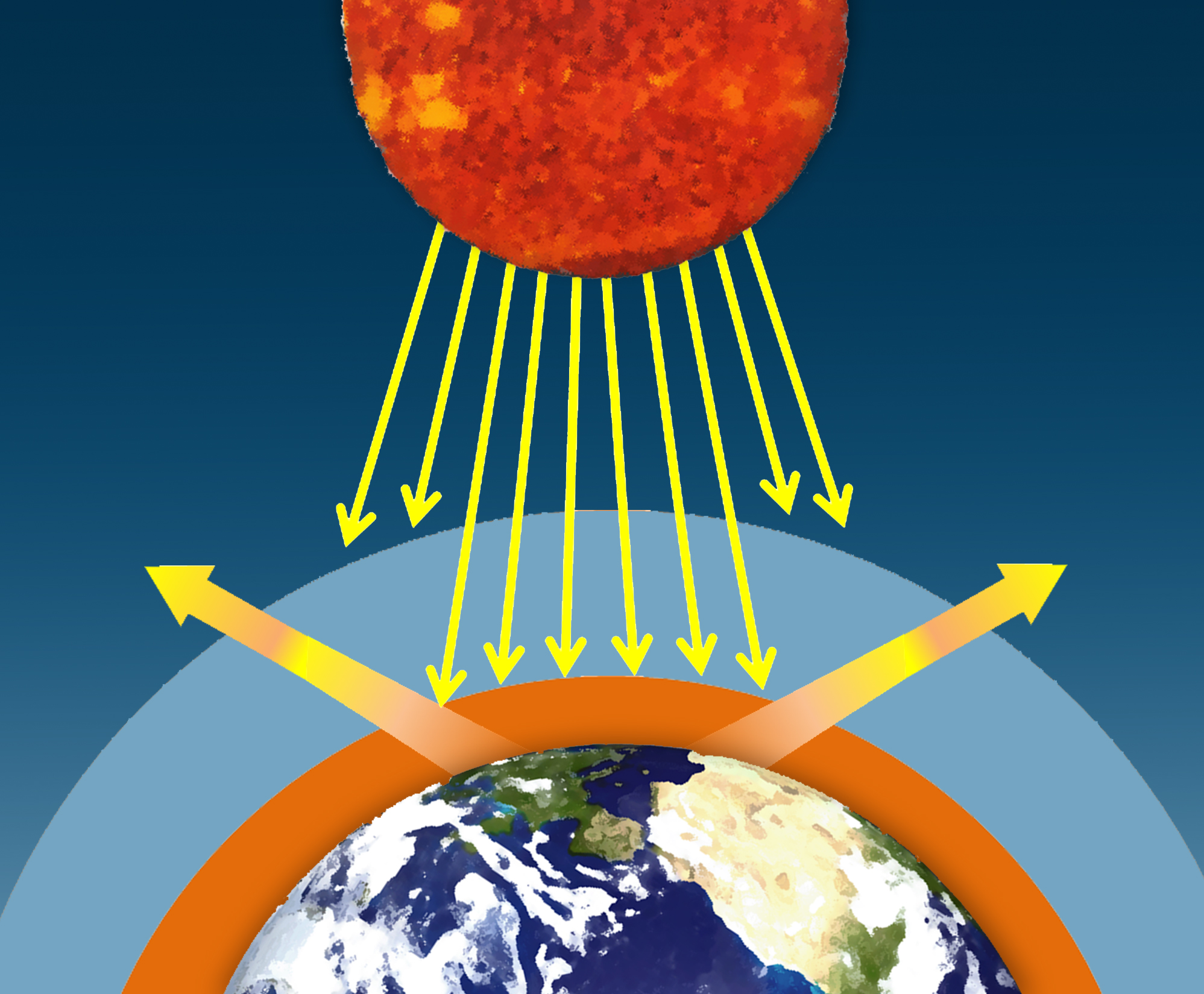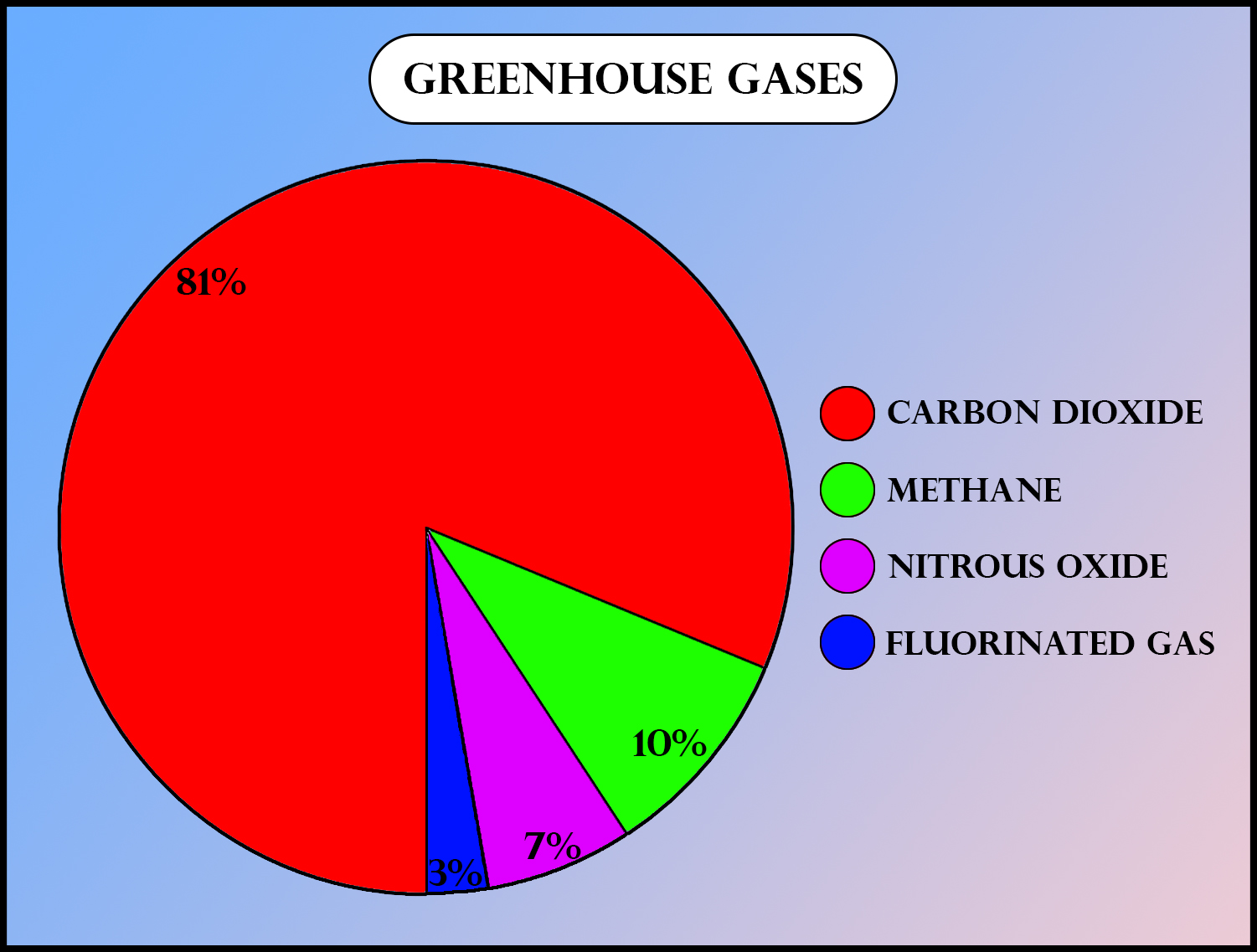Table Of Content

CO2 is typically measured in parts per million because it is 1,000 times more prevalent than the other gases, but is shown as parts per billion in the table for consistency. Since the Industrial Revolution, rising emissions of greenhouse gases—including carbon dioxide, methane, nitrous oxide, and others—have been the driving force behind climate change. However, human activity is resulting in the increased emission of so-called greenhouse gases (GHGs) which, unlike other atmospheric gases such as oxygen and nitrogen, becomes trapped in the atmosphere, unable to escape the planet. Water vapor is actually the world's most abundant greenhouse gas, but it is not tracked the same way as other greenhouse gases because it is not directly emitted by human activity and its effects are not well understood. Similarly, ground-level or tropospheric ozone (not to be confused with the protective stratospheric ozone layer higher up) is not emitted directly but emerges from complex reactions among pollutants in the air.

Transportation Sector Emissions
For example, a decrease in solar activity coupled with increased volcanic activity helped trigger the Little Ice Age. From 2010 to 2021, policies were put in place to lower annual emissions by 11 gigatons by 2030 compared to what would have otherwise happened. Individuals can also join the UN’s #ActNow campaign for ideas to take climate-positive actions.
‘It’s now or never’: UN climate report’s 4 urgent takeaways
By the early 21st century, CO2 levels reached 384 ppm, which is approximately 37 percent above the natural background level of roughly 280 ppm that existed at the beginning of the Industrial Revolution. Atmospheric CO2 levels continued to increase, and by 2018 they had reached 410 ppm. According to ice core measurements, such levels are believed to be the highest in at least 800,000 years and, according to other lines of evidence, may be the highest in at least 5,000,000 years.
Carbon dioxide
In discussions on climate change, we tend to focus on carbon dioxide (CO2) — the most dominant greenhouse gas produced by the burning of fossil fuels, industrial production, and land use change. Some greenhouse gases, such as methane, are produced through agricultural practices, in the form of livestock manure, for example. Others, like CO2, largely result from natural processes like respiration, and from the burning of fossil fuels like coal, oil and gas.
As these organisms expire and fall to the ocean floor, their carbon is transported downward and eventually buried at depth. A long-term balance between these natural sources and sinks leads to the background, or natural, level of CO2 in the atmosphere. CO2 has consequently accumulated in the atmosphere at an average rate of 1.4 parts per million (ppm) by volume per year between 1959 and 2006 and roughly 2.0 ppm per year between 2006 and 2018. However, certain current sinks, such as the oceans, could become sources in the future. This may lead to a situation in which the concentration of atmospheric CO2 builds at an exponential rate (that is, at a rate of increase that is also increasing over time).
The Greenhouse Effect and our Planet
The greenhouse effect is the process through which heat is trapped near Earth's surface by substances known as 'greenhouse gases.' Imagine these gases as a cozy blanket enveloping our planet, helping to maintain a warmer temperature than it would have otherwise. Greenhouse gases consist of carbon dioxide, methane, ozone, nitrous oxide, chlorofluorocarbons, and water vapor. Water vapor, which reacts to temperature changes, is referred to as a 'feedback', because it amplifies the effect of forces that initially caused the warming. People add methane to the atmosphere through livestock farming, landfills, and fossil fuel production such as coal mining and natural gas processing.
Contributions of specific gases to the greenhouse effect
Surface O3 is a result of air pollution; it must be distinguished from naturally occurring stratospheric O3, which has a very different role in the planetary radiation balance. The primary natural source of surface O3 is the subsidence of stratospheric O3 from the upper atmosphere. In contrast, the primary anthropogenic source of surface O3 is photochemical reactions involving the atmospheric pollutant carbon monoxide (CO). The best estimates of the natural concentration of surface O3 are 10 ppb, and the net radiative forcing due to anthropogenic emissions of surface O3 is approximately 0.35 watt per square metre. Ozone concentrations can rise to unhealthy levels (that is, conditions where concentrations meet or exceed 70 ppb for eight hours or longer) in cities prone to photochemical smog. Fluorinated gases — gases to which the element fluorine has been added — are created during industrial processes and are also considered greenhouse gases.

Global warming and the greenhouse gases that cause it occur naturally — without them, Earth's average surface temperature would be a gelid zero degrees F (minus 18 C). But the amount of greenhouse gases in the atmosphere has skyrocketed to detrimental levels in recent history. In the United States overall, Land Use, Land-Use Change, and Forestry (LULUCF) activities have resulted in more removal of CO2 from the atmosphere than emissions. Because of this, the LULUCF sector in the United States is considered a net sink, rather than a source, of CO2. In many areas of the world, the opposite is true, particularly in countries where large areas of forest land are cleared, often for conversion to agricultural purposes or for settlements.
In 2021 and 2022, the increase in total greenhouse gas emissions was driven largely by an increase in CO2 emissions from fossil fuel combustion due to the continued rebound in economic activity after the height of the COVID-19 pandemic. In 2022, CO2 emissions from fossil fuel combustion increased by 8% relative to 2020 and 1% relative to 2021. The increase in natural gas consumption and emissions in 2022 is observed across all sectors except for U.S.
The logarithmic relationship predicts that the surface warming potential will rise by roughly the same amount for each doubling of CO2 concentration. At current rates of fossil-fuel use, a doubling of CO2 concentrations over preindustrial levels is expected to take place by the middle of the 21st century (when CO2 concentrations are projected to reach 560 ppm). A doubling of CO2 concentrations would represent an increase of roughly 4 watts per square metre of radiative forcing. The total radiative forcing by anthropogenic CO2 emissions since the beginning of the industrial age is approximately 1.66 watts per square metre. Other anthropogenic sources include the burning of forests and the clearing of land.
He's Accused of Smuggling, but Not Drugs or Guns: It's Greenhouse Gases - The New York Times
He's Accused of Smuggling, but Not Drugs or Guns: It's Greenhouse Gases.
Posted: Tue, 05 Mar 2024 08:00:00 GMT [source]
Human-caused nitrous oxide emissions largely arise from agriculture practices. Bacteria in soil and water naturally convert nitrogen into nitrous oxide, but fertilizer use and run-off add to this process by putting more nitrogen into the environment. Governments and organizations around the world such as the Intergovernmental Panel on Climate Change (IPCC), the United Nations body that tracks the latest climate change science, are measuring greenhouse gases, tracking their impacts, and implementing solutions. By trapping heat from the sun, greenhouse gases have kept Earth's climate habitable for humans and millions of other species. But those gases are now out of balance and threaten to change drastically which living things can survive on this planet—and where.
"Replanting helps to reduce the buildup of carbon dioxide in the atmosphere as growing trees sequester carbon dioxide through photosynthesis," Daley told Live Science. "However, forests cannot sequester all of the carbon dioxide we are emitting to the atmosphere through the burning of fossil fuels, and a reduction in fossil fuel emissions is still necessary to avoid buildup in the atmosphere." Additional trace gases produced by industrial activity that have greenhouse properties include nitrous oxide (N2O) and fluorinated gases (halocarbons), the latter including CFCs, sulfur hexafluoride, hydrofluorocarbons (HFCs), and perfluorocarbons (PFCs). Nitrous oxide is responsible for 0.16 watt per square metre radiative forcing, while fluorinated gases are collectively responsible for 0.34 watt per square metre. Nitrous oxides have small background concentrations due to natural biological reactions in soil and water, whereas the fluorinated gases owe their existence almost entirely to industrial sources.
No comments:
Post a Comment